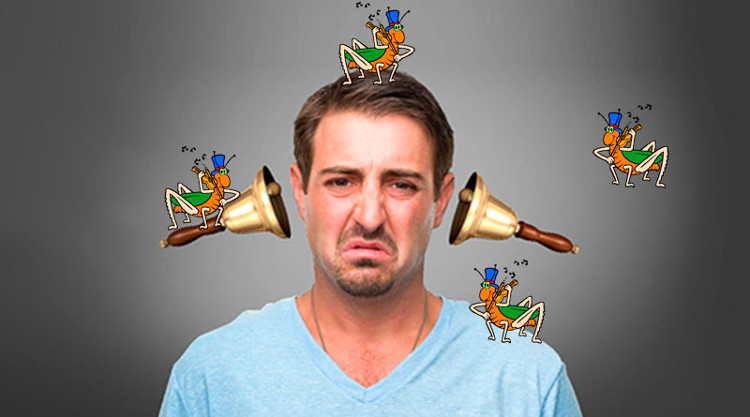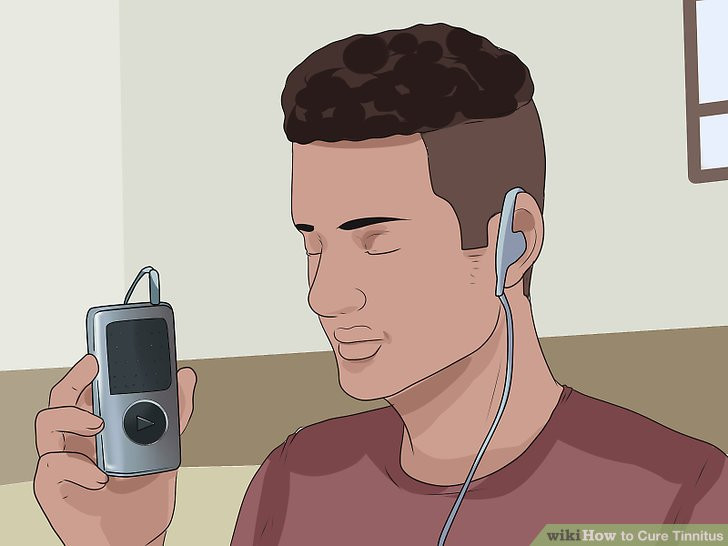New equipment helps solve tinnitus
University of Michigan researchers have successfully developed a device that promises to be a "cure" for patients with tinnitus syndrome.
It is expressed when the sick person senses, such as a noise, a ringing bell or a " hum , u u" sound like an insect flying in the ear. This is not only annoying but also directly affects their activities and lives. According to 2016 statistics, up to 2 million Americans are seriously affected by this disease. At the same time, this is also a common form of occupational disease in the military. Worse, this is often considered a chronic , incurable disease .

Tinnitus is the obsession of millions of people.
Current treatments are focused on cognitive treatment to help patients get used to strange sounds, use realistic sounds to hide feelings or even surgery. Dangerous brain magic but not very effective. However, things will change thanks to a new device announced by scientists at the University of Michigan.
After years of research, the group of scientists - led by Professor Susan Shore, created a device that uses weak electrical impulses and special sounds to re-arrange rhombic cells (fusiform cell s ) return to normal and stop giving false signals. Rhombic cells are the main cells that help the brain evaluate where sounds come from and eliminate background noise.

Patients often have to use sounds, listen to loud music to ease the discomfort.
The scientists conducted tests on 20 patients, divided into 2 groups lasting for 16 weeks. Every day, patients will use the device for 30 minutes. In the process of use, the machine will generate impact signals, stimulating the rhombic cells to change the initial speed, and put these nerve cells back to normal operation. First, special sound is played into the headset via a dedicated headset. These stimuli are then alternately combined with electronic light transmitted through electrodes attached to the cheek or neck.
At the end of the experiment period, none of them showed signs of side effects. Most say that the level of nuisance of virtual sounds has decreased significantly. In particular, two of them said the strange tinnitus had completely disappeared.

Equipment tested on patients.
Professor Susan Shore, the leader of the research team, said: 'These results certainly encouraged us a lot. However, we need to optimize the treatment time as well as determine which groups of patients may be most beneficial. In addition, it is necessary to study further whether this method works for head and neck deformities.
In fact, the experiment is still limited when the patient relapses after a week of stopping using the device, even for 2 patients who reported a complete disappearance of the disease, or the researchers' used only volunteers with the same special tinnitus format for the experiment.
However, we still have complete right to expect and hope for a new technology capable of creating a turning point in the treatment of a disease that was once considered "incurable" .
- Causes of tinnitus and treatment
- Music therapy helps improve tinnitus
- People with tinnitus are more emotional than ordinary people
- Don't ignore the cry in your ears
- What to do if tinnitus occurs when flying
- The cyborg device helps to heal
- Implant anti-tinnitus device, dizziness
- Chocolate helps children do math better
- Does not cause cancer, but mobile users suffer from an unexpected risk
- Why do we hear whispers?
- Video: Homemade equipment helps users swim faster than Michael Phelps
- Automatic fertilizer equipment according to ... needs of plants
 Green tea cleans teeth better than mouthwash?
Green tea cleans teeth better than mouthwash? Death kiss: This is why you should not let anyone kiss your baby's lips
Death kiss: This is why you should not let anyone kiss your baby's lips What is salmonellosis?
What is salmonellosis? Caution should be exercised when using aloe vera through eating and drinking
Caution should be exercised when using aloe vera through eating and drinking